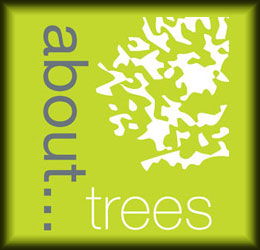Notice the dark section under my thumb and the “burnt” looking leaves, and then comes the crown dieback seen clearly in the photo on the right- this is typical
At About Trees Ltd., we understand the value of your ash trees in Kent (Fraxinus excelsior) and the importance of preserving their health and beauty while prioritising safety. Our professional tree care services are tailored to address the specific challenges posed by Ash Dieback, ensuring the longevity of your trees and the safety of your property. We’ve made a handy guide that will be available to download to help you out when diagnosing Ash Dieback, it’s been kept simple and easy to read for you.
Identifying Ash Dieback: Detect the Early Warning Signs
Ash Dieback, caused by the fungus Hymenoscyphus fraxineus, is a serious threat to the health and vitality of ash trees in Kent and the surrounding counties. It is crucial to be able to identify the early warning signs of this disease to take prompt action and mitigate its impact. By closely monitoring your ash trees, you can detect the following indicators of Ash Dieback:
1. Crown Dieback:
One of the primary symptoms of Ash Dieback is the progressive dieback of the crown. Initially, the upper branches show signs of withering and decline. As the disease progresses, more branches become affected, resulting in a sparse foliage appearance. Premature leaf loss and reduced canopy density are also common characteristics. Crown dieback signifies significant damage to the tree’s vascular system, hampering its ability to transport water and nutrients efficiently.
2. Diamond-shaped Lesions:
Ash trees afflicted by Ash Dieback often exhibit diamond*-shaped lesions on the bark of the trunk and branches. These lesions are caused by the invasion of the fungus and subsequent damage to the tree’s tissues. They may appear dark brown or purple and are typically accompanied by cracks or splits in the bark. The presence of these lesions indicates the active infection and further supports the diagnosis of Ash Dieback.
*typically, as nature does not want to be too predicable, these are not always diamond shaped.
3. Epicormic Growth:
In response to the stress caused by Ash Dieback, ash trees may exhibit epicormic growth. This phenomenon involves the development of new shoots from dormant buds on the main stem or branches. These shoots often appear weak, distorted, and discolored. Epicormic growth is the tree’s attempt to compensate for the loss of leaf area and impaired nutrient uptake due to the disease.
4. Crown Thinning and Dying Branches:
As Ash Dieback progresses, the tree’s crown continues to thin, and more branches succumb to the disease. Crown thinning is a consequence of the extensive damage to the tree’s vascular system and the inability to sustain a healthy canopy. Dying branches, starting from the top of the tree and progressing downwards, are a clear indication of the disease’s detrimental impact on the tree’s overall health and vigor.
Early detection of Ash Dieback is crucial for implementing appropriate management strategies and minimising the disease’s spread. If you observe any of these signs in your ash trees, it is vital to consult a professional arborist, such as the experts at About Trees Ltd., to assess the severity of the infection and develop a targeted treatment plan. Prompt action can significantly increase the chances of preserving the affected trees and protecting neighboring ash trees from the devastating effects of Ash Dieback.
By staying vigilant and understanding the early warning signs, you play a critical role in safeguarding the health and longevity of your ash trees. Together with the expertise of About Trees Ltd., we can combat Ash Dieback and ensure a thriving tree population for future generations to appreciate and enjoy.
Why Choose Us:
- Expert Arborists: Our team of certified arborists has extensive experience in diagnosing and treating Ash Dieback in Kent and the surrounding counties. We stay up-to-date with the latest research and best practices to provide you with the most effective solutions.
- Comprehensive Services: From initial inspections to precise diagnoses and customised management plans, we offer a wide range of tree care services to address Ash Dieback and other tree-related issues.
- Advanced Techniques: We employ state-of-the-art techniques and equipment to ensure efficient and effective treatment. Our team is trained in the latest tree care methodologies to deliver superior results.
- Environmentally Friendly Approach: We prioritise sustainable tree care practices, employing methods that minimise the impact on the environment while effectively managing Ash Dieback. Our aim is to protect both your trees and the surrounding ecosystem.
- Customer Satisfaction: We are dedicated to providing exceptional customer service. From the moment you contact us, you can expect clear communication, professional advice, and a commitment to meeting your tree care needs, with safety as our top priority.
Don’t forget
If you suspect that your ash trees are affected by Ash Dieback, look out for the following signs:
- Wilting or browning leaves
- Crown dieback
- Lesions on the bark
- Epicormic growth (shoots growing from the trunk or branches)
If you observe these symptoms, contact About Trees Ltd. immediately for a professional diagnosis and treatment plan.
Conclusion:
Don’t wait until it’s too late to address the threat of Ash Dieback in your ash trees in Kent and the surrounding counties. Trust About Trees Ltd.’s expertise and commitment to preserving your trees’ health and beauty while ensuring your safety and satisfaction. Contact us today to schedule an inspection and customised tree care plan.



